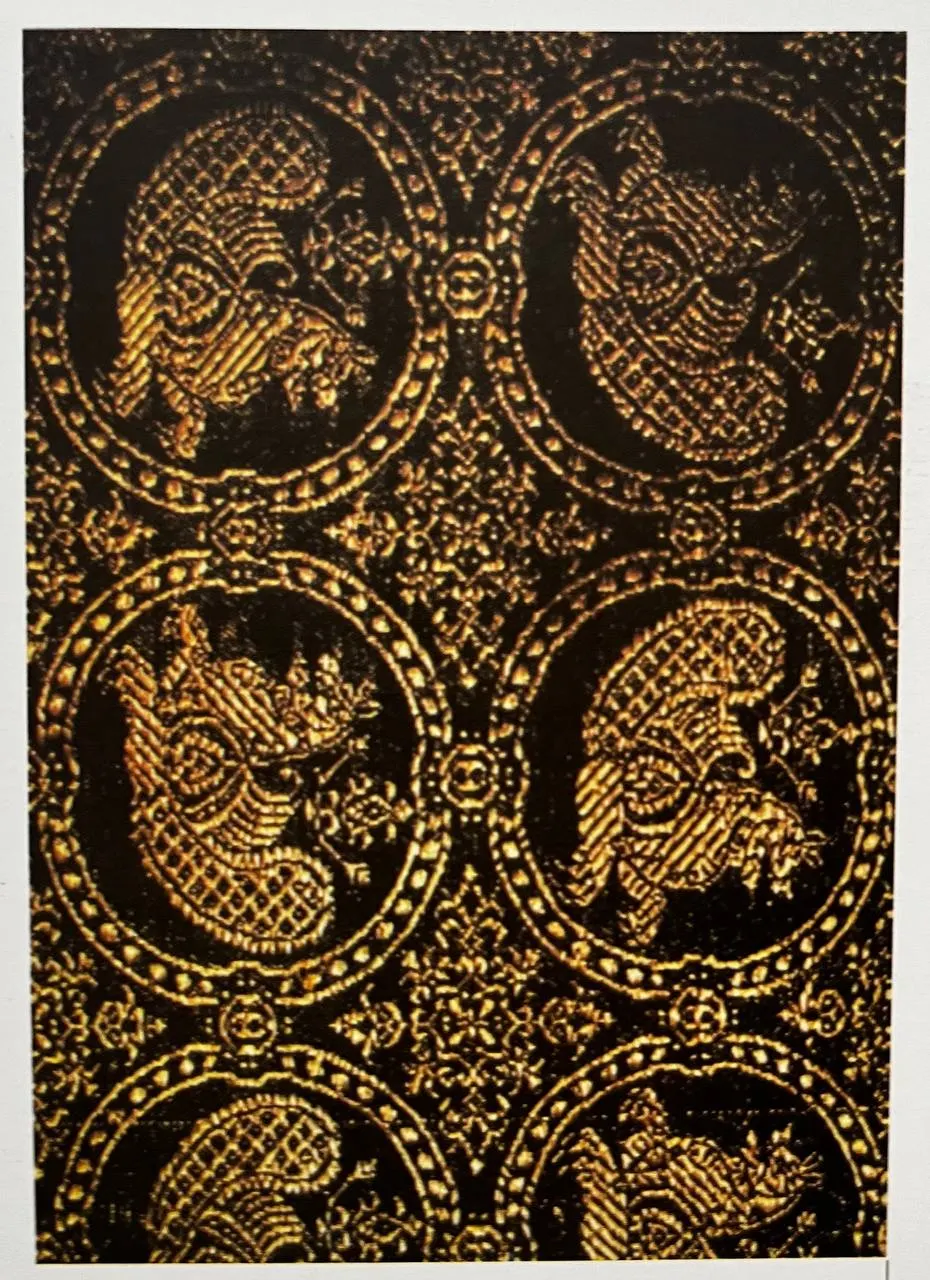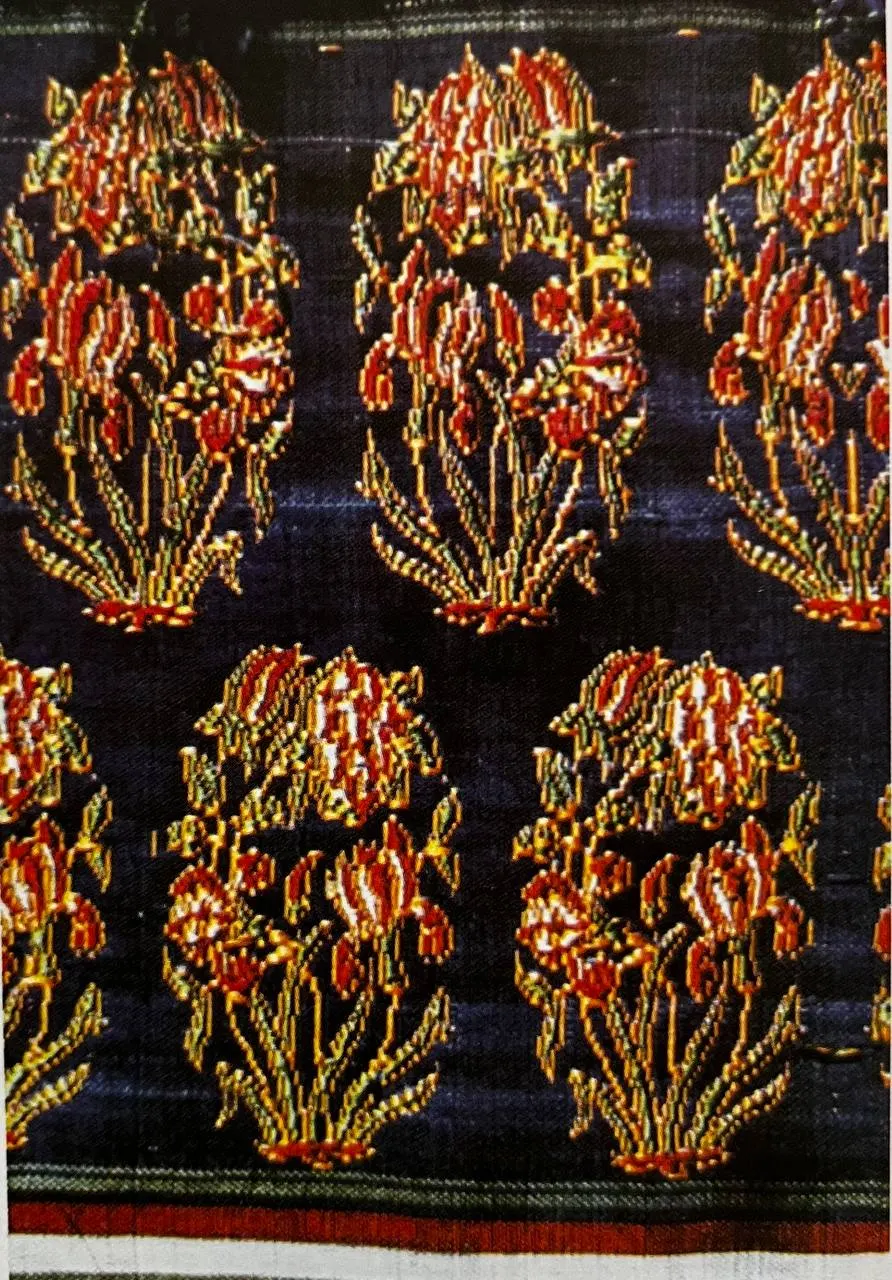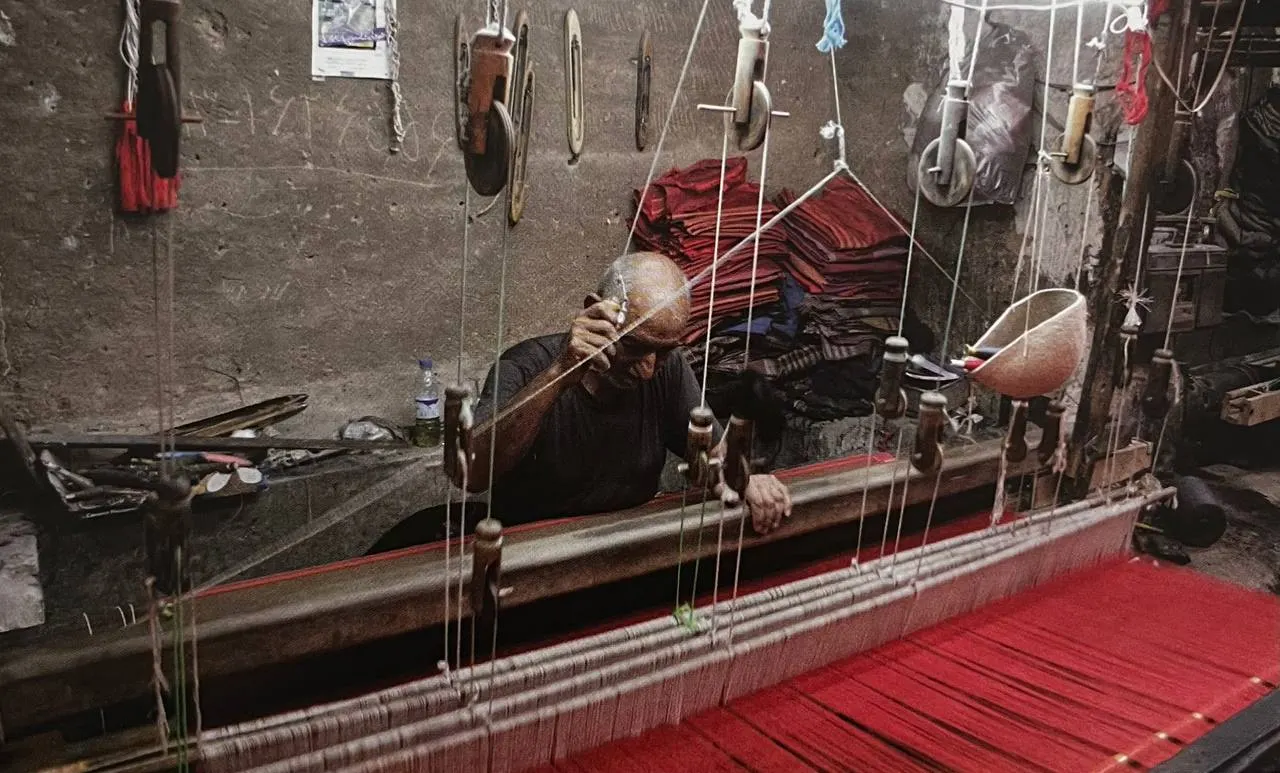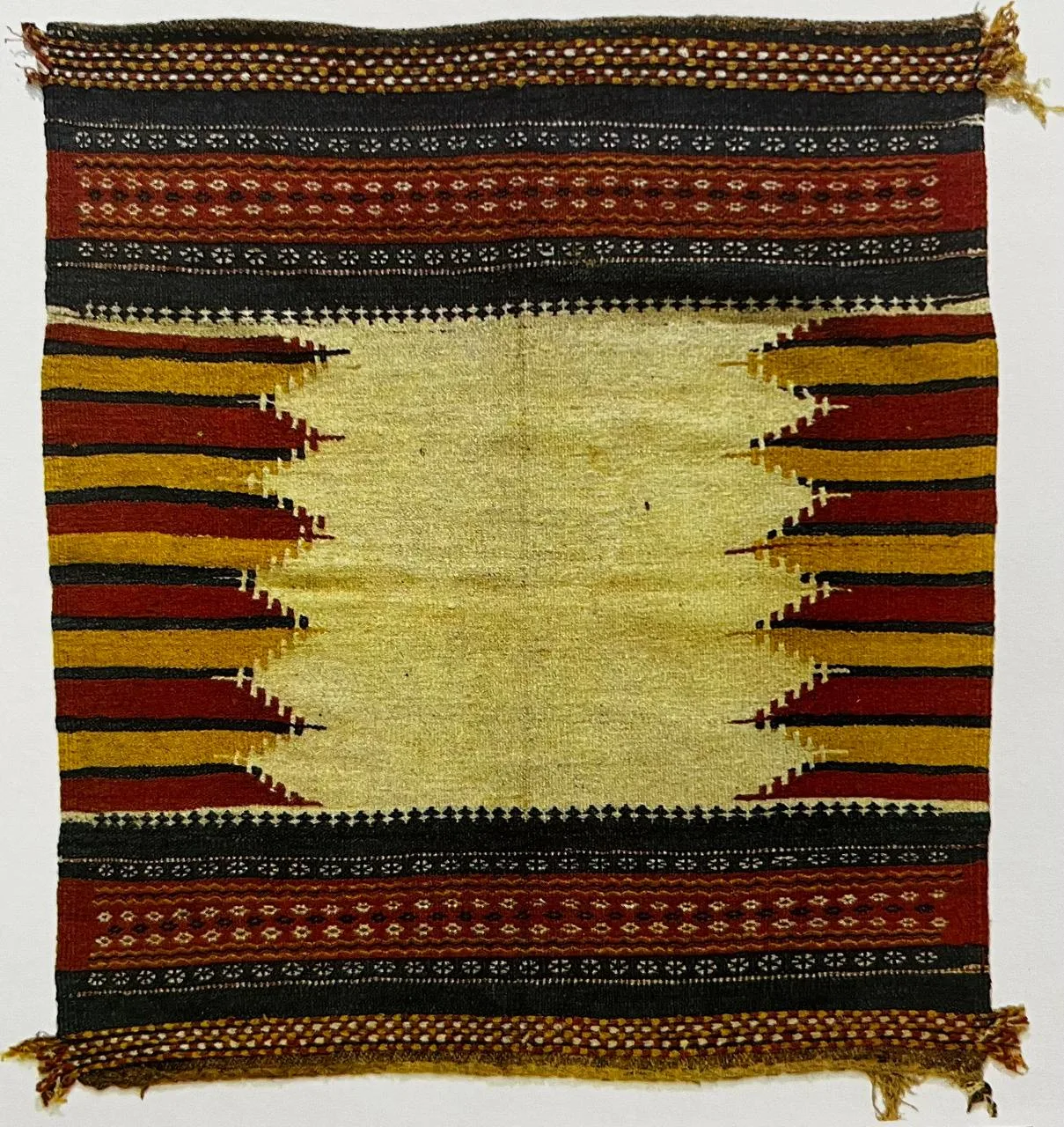Kashan Iranian rug
Factors influencing Kashan Iranian rug
A Kashan handwoven rug’s primary function is to cover floors; it’s a work of utilitarian art.
B. The dynamic traditional art form known as “Glim,” or Kashan hand-woven Persian rug , has been able to adapt to the demands of modern and evolved society by maintaining its original production method with only minor aesthetic modifications. It is evident from the surviving examples from the three Safavid Qajar eras that the Kashan carpets of these eras were woven with modifications made to suit the time of day without sacrificing their original quality. Kashan Iranian rug

C.The Kashan carpet, also known as Zilo-Glime, is a visual art form rooted in traditional rural arts because of its basic use of pattern and color.
D. The human handweaving process used to create Kashan carpet (Zilo-Glime) influences the product’s ultimate quality.
*Click on the opposite link to see precious Iranian handmade and machine combined silk carpets*
E. The importance of human presence (hand), which is necessary for every step of the production process (carpet – rug , zilo), from the preliminary stages of weaving preparations (drawing and drawing) to the final stages of weaving (paying for repairs in carpets). may be observed, and human communication via hands only creates a unique physical and material connection. Through this sensory connection, the weaver, dyer, or designer creates a very intimate relationship with the carpet.
One of the most important variables influencing Kashan’s Silk rug and rug production has been location.
* Carpet production in Kashan, an industrial and manufacturing area, has mostly been accomplished by displacement rather than progressive change.
* The area around Kashan is hot and arid. Above all, the warm hues found in Kashan carpets represent this characteristic.
* The creation of carpets has roots in rural and nomadic cultures throughout many parts of Iran. Regarding the carpet of Kashan, this carpet has benefited from the facilities of Kashan and along with commercial and economic connections, it was able to develop the carpet from more advanced stages because this city is familiar with the industry, especially the weaving industry, which shares many common roots with the carpet.
* Although there are occasional short-round portraits and brightly colored plant patterns in some Kashan carpets made by a particular group of weavers, the majority of Kashan carpets are made in desert regions, with the exception of a few villages and the surrounding areas. This dream on a hand-woven carpet is a symbol of celestial creation.
One of the other key elements of the Kashan carpet has been time.
The remnants of many eras’ carpets provide as a chart of the influences of various temporal circumstances on carpets woven at that time, including the effects of the Safavid or Qajar eras and other periods.

* Safavid carpets are a class of opulent carpets that are woven using the expertise of the designers, weavers, dyers, and masters of the era.
*Carpets from the Qajar era represent a sort of restoration and renaissance of hand-woven carpets; this trend was facilitated by the arrival of foreign enterprises in centers of production and has been linked to the expansion of rural carpet weaving.
Access to raw materials: Kashan’s ability to easily obtain materials like cotton, silk, and wool (which is imported for other purposes) as well as the multitude of materials required to make dyes.
The availability of production facilities and the existence of craftspeople, such as carpet weavers and other carpet-related workers, have had a significant impact.
Two further distinctive elements that contribute to the individuality of Kashan Persian carpet designs are pattern and color.
*The “surreal” aspect (unrealism) and the abstraction of the patterns (simplicity) are two common traits of Iranian carpet design that are shared by carpet themes throughout the Kashan region. Both the early rural origins and nature have an impact on them.
* The following categories show where all Kashan carpet motifs, including the common motifs seen in Iranian carpets, originated:
– Mythological symbols and legends: These symbols, which include the serpent, horse, peacock, garden, tree of life, and Simorgh, have their origins in mythology and typically oral stories that existed before the dawn of history. Kashan Iranian rug
Religious and ritualistic symbols included the following: altar, sun (seal), star, tree (cypress), Aryan circle, and, following Islam, additional symbols including swords and dome designs.
– Bird, tree, rose, forest, river, mountain, pond (pond, sky – garden, water), animal symbols (hunting), horse, sparrow, ram, duck, and fish are examples of symbols of nature (agricultural).
– A few signs and symbols, which vary depending on the location.
-Epic and historical symbols: Their, Khamse Nizami (Shirin and Farhad, Laila Majnoon), Noshirvan, Hoshang, Jamshid, Shapur, and Shahnameh heroes (Rostam and Sohrab).
Situational symbols include rulers, celebrities, and emirs.
The Kashan region is home to two entirely distinct carpet weaving styles: the Joshghan carpet, which features a unique regional pattern and map throughout Joshghan.

Areas of Kashan Iranian rug weaving
(General) Kashan area
The Kashan handwoven carpet is regarded as an urban carpet that embodies traditional hand weaving techniques. The Kashan Style and maktab of Persian carpet is a resilient and useful carpet with a medium and high index. Up until it reaches an index of 50 or more, it is subject to the carpet’s capacity and the aesthetic standards pertaining to urban motif design.
Kashan carpets were first created with English-imported wool toward the conclusion of the Qajar era. Later on, Iranian hand-spun wool or wool spun in Kashan spinning factories with natural colors was used. Kashan Iranian rug
Bright hues, which were made possible by the talent and artistry of Kashan dyers, were a hallmark of the designers’ aesthetic. This explains why the Kashan pattern is referenced so frequently. It is also linked to the hue of Kashan carpet. The Renaissance lacquer hue is Kashan’s defining attribute. The motifs seen in Kashan carpets have taken on distinct identities throughout time and in response to various circumstances.
The pattern on the Kashan Iranian rug
The pattern is the most crucial element in identifying the carpet of any place, especially Kashan. Carpet patterns typically have their origins in the far past as well as in people’s imaginations and mentalities, which they developed and refined in response to their wants, desires, and life experiences. Kashan Iranian rug
The carpet and its motifs, like many connections and necessities of human life, have not profited from these effects across time or over the stages of the transition from early and primary cultures to urban societies.

Patterns classified as: urban patterns (workshop) and rural patterns (mental) are a significant component of the classifications pertaining to urban and rural Origins of Persian carpet. Workshop on urban patterns: Because Kashan is an ancient city, a number of industries and professions that were prevalent there profited from some form of organization. Among these industries and professions was pattern making, which led to the expansion of Kashan’s textile weaving sector and the exquisite pattern and color achieved by these fabrics.
The Kashan carpet patterns and carpet patterns were unaffected; while they are derived from mental patterns, they have found a reasonably exact and calculable shape in terms of structure through placement as educational rules (master-student).
A skilled individual and an artist known as a designer turn patterns into carpet designs. The artist’s skill and ability to make the most of these patterns is crucial, even though the variation of this kind of map is restricted.
Kashan Iranian rug motifs can be divided into three specific periods:
1.Safavid royal carpet era: This time period is unmistakably connected to the Safavid era and the enormous, pricey silk carpets that were woven for use in palaces or as presents under the patronage of the court and nobility.
A: These carpets’ designs may have been inspired by Kashan’s exquisite and well-liked delicate textiles.
B: Book arrangement and cover design techniques have occasionally been applied to carpet designs.
C: The rugs might be made according to the designs the court required; these designs were often employed by well-known artisans who drew inspiration from the schools of Herat, Tabriz, and Isfahan.
2.Periodic motifs: The production of carpets was not very active at the start of the Qajar era. Mullah Hasan Mohtsham is the most well-known name in the field; he primarily weaves silk carpets and little pieces of cloth for the monarch and other authorities.
If we take the samples ascribed to Mullah Hassan Mohtsham as authentic, we find that the Safavid era’s and flowers’ and leaves’ motifs frequently affected their designs. Large carpets were created by the Eilat leaders at the middle of the Qajar era, when carpet weaving in Iran was primarily done in rural areas. Additionally, the nomads in recently developed cities like Malair, Bijar, and Saruq, as well as those with better integrated services, were weaved.
3.The Renaissance period and the existence of foreign businesses
Iranian hand-woven carpets, particularly those from the Safavid era, were well-known to the west around the close of the 19th century because to the opening of museums and private treasures. Iran and began to manufacture carpets; in any case, this led to the expansion of carpet weaving at the same time as woven fabric was declining, despite the fact that foreign businesses’ involvement in Kashan was not very widespread. He had married a woman who was from Arak.
Whether this is accurate or not, rugs from the late Qajar period—of which there are plenty—were inspired by the Qajar designs of architects like Mirza Ali Akbar or they employed Saruq, Farahan, and occasionally Isfahan patterns. The influence of foreign businesses in Kashan grew around the close of the 19th and the start of the 20th centuries, and as a result, certain major manufacturers started making larger, more intricately designed fabric carpets.
The rise of a group of carpet designers who, with the aid of their expertise, knowledge, and abilities, influence the patterns of Kashan carpets corresponds with the expansion of Kashan carpet weaving in the first and second decades of the 20th century.
Some of the most well-known carpet designers from Kashan move to Tehran with the start of the Pahlavi period, the establishment of the school of ancient crafts, and the call for artists from various cities to weave royal carpets. However, this is also the beginning of creating long-lasting patterns on the carpets that are rich in the designs of the Safavid era carpets. Regarding Isfahan and Kerman, they have drawn upon Kashan’s legacy of fine textile weaving.

Kashan Iranian rug (Joshghan)
Semi-rural carpet: Because the Joshghan Persian carpet combines aspects of both urban and rural carpets, it can be classified as a semi-rural carpet. In spite of this, records indicate that sizable carpets with motifs resembling the typical Joshghani designs were woven there.
Even though they are no longer as active, weavers in Kamu, Mimeh, Hossein Abad, Barkhar, Morche Khort, and Se often used Joshghan themes in their work. is measured Gusghan rugs have little leaves and flowers all over them.
